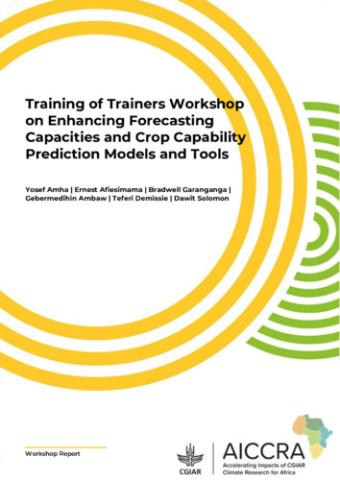Abstract
The detrimental impact of hydro-meteorological risks on agriculture frequently leads to food insecurity, particularly in Sub-Saharan Africa (SSA). Hence, the agriculture communities require climate-informed decision support tools that guide adaptation measures against climate change in the agriculture sector. The climate-informed crop capability prediction tool is one of these tools to benefit user community in making tactical and strategic decisions on inputs needed for agriculture and food security sectors as early as the crop-growing season. In this regard, regional partners1 commissioned a series of studies to develop a crop capacity
prediction tool in order to maximize agricultural productivity in the Southern Africa Development Community (SADC) region while limiting the consequences of hydrometeorological risks on the food system. This tool can assist policymakers and user
communities in making decisions on the most up-to-date crop capability based on projected seasonal climate data. However, for this tool to be operationalized and bring maximum impacts, roving training of trainers (ToT) workshops are required for agricultural yield prediction users, seasonal climate forecast (SCF) providers, researchers, and academics. The first of such ToT workshops was held in Harare, Zimbabwe, and the second one in Maputo, Mozambique, from 2–5 May 2023. Around 30 professionals who came from the Universidade Eduardo Mondlane (UEM), the Ministry of Agriculture (MADER), Mozambique National Institute of Meteorology (INAM) and other relevant departments attended this session. This ToT workshop covered a wide range of topics, including providing a conceptual framework for the Climate Agriculture Modelling and Decision Tool (CAMDT) - Decision Support System for Agrotechnology Transfer (DSSAT) platform; the importance of seasonal climate forecast (SCF); a hands-on exercise in data management (quality control and missing values, as well as a specific template/format); data acquisition; model descriptions
(assumptions and uncertainties); and model analysis (simulation and validation). Participants' feedback indicated that the model and its outputs were successfully transferred, resulting in proficiency with the tool for future applications. They also thought
the training was extremely relevant and valuable to the user communities. Despite the availability of a user manual, participants preferred a simpler programme-assisted method so that individuals with less computer knowledge could run the model for immediate use and application. It was emphasized that complete implementation of the SFC-driven crop capability
prediction model and its timely deployment will result in large savings considering the vital role agriculture plays in the area. Participants recommended that the model be improved by including local circumstances and cultivars. However, for this capacity-building programme to be successful and have a lasting impact, it needs the full support of pertinent national and regional organizations, projects, and governments in the area. More resources are also required to guarantee that developers continued to engage in model improvement and skill transfer within SADC and beyond.

